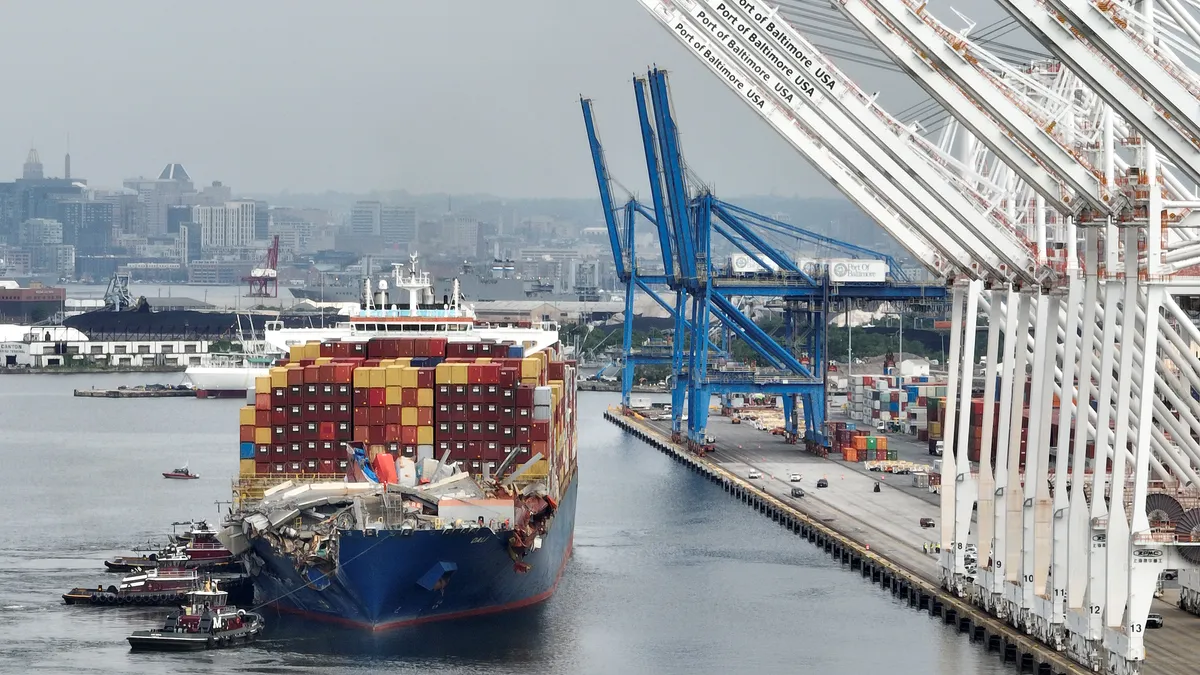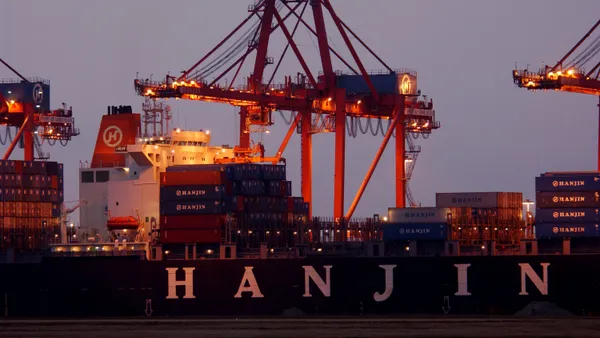As full access to the Port of Baltimore will soon reopen, shipping lines and federal agencies alike are making plans to support the port's full recovery.
Shipments to the port have been limited ever since the collapse of the Francis Scott Key Bridge in March. While federal officials quickly opened temporary shipping lanes, they projected access to the main channel, the Fort McHenry Federal Channel, would remain limited for months. On May 24, officials estimated work to clear the channel would be fully complete between June 8 and June 10.
Given the months-long limits on access to the Port of Baltimore, many supply chain stakeholders opted to divert cargo to other ports. However, with the channel's full reopening date fast approaching, ocean carriers and federal officials are bracing for demand to bounce back, according to recent announcements. Here’s a look at some of those plans.
Shipping lines resume transit to Baltimore
While many ocean carriers have been operating at the Port of Baltimore in limited ways following the bridge collapse, some have recently updated their services that call on the port.
Maersk, MSC, Hapag-Lloyd, ONE Line and OOCL have either resumed full operations to the Port of Baltimore or announced specific booking acceptance of future arrival and departures at the port, according to notices compiled by Supply Chain Dive.
| Shipping line | Plan for Baltimore-bound cargo |
|---|---|
| Maersk | The carrier is accepting loading and discharge bookings for some upcoming voyages, which it detailed in a May customer advisory. As an example, eastbound and westbound services between Baltimore and Yantian are scheduled to operate in June and July. |
| MSC | The carrier announced that its MSC East Coast South America cargo to Baltimore was reinstated with its container ship MSC ALMA VII set to call the port on July 1, according to a May 24 update from the carrier. |
| Hapag- Lloyd | The carrier already resumed services at the Port of Baltimore during the week of May 21, Hapag-Lloyd Corporate Communications Manager Hanja Maria Richter said in an email. |
| ONE Line | The carrier resumed normal services on April 26, a spokesperson for ONE Line said in an email. They added that ONE Line offers export and import ocean services through Norfolk, Virginia, and has additional pre-carriage and on-carriage options to and from Baltimore via barge services. |
| OOCL | “With the reopening of port of Baltimore and the resumption of port call, OOCL has resumed booking acceptance to/from Baltimore,” the carrier said in an emailed statement. |
Many of the top ocean carriers, however, made efforts to restart services earlier in the year. When officials opened the Fort McHenry Limited Access Channel in April to commercial vessel traffic, it signaled a return to normal for the port might soon be within reach, prompting ocean carriers to begin announcing service updates.
Prior to that point, “large vessels were largely being diverted to the ports in New York and Norfolk or were utilizing feeder vessels,” René Bach Larsen, managing director of freight forwarding in North America at GEODIS told Supply Chain Dive in an email.
Other East Coast ports also saw volumes grow in April as a result of diversions. The Georgia Ports Authority said in a press release its auto volumes, in particular, benefited from diversions from Baltimore.
Acknowledging the diversions, federal officials have been pushing companies who typically shipped through the Port of Baltimore before the crisis to commit to return volumes once access fully reopens.
Agencies increase communication with stakeholders
The White House also convened its Supply Chain Task Force at the end of May to share federal agencies' efforts to enable the Port of Baltimore's return to full operations
The Department of Transportation, Department of Agriculture, Commerce Department and Federal Maritime Commission, among others, are all engaging with stakeholders to quickly identify and address pending bottlenecks, according to a readout of the meeting.
More specifically, the Department of Agriculture is coordinating with food producers as shipping schedules and routes shift back to Baltimore. Meanwhile, the Department of Commerce is working with retailers to minimize supply chain disruptions.
Similarly, Bach Larsen advises shippers using Baltimore to focus on communication and preparedness with carriers as more vessels return to the port.
“As the Port of Baltimore is slowly opening up for calls again, we highly suggest ensuring dray capacity and potential intermodal options are planned and confirmed 1-2 weeks prior to arrival,” Bach Larsen said.
In the interim, since some capacity is still being redirected to Norfolk and New York, he advises shippers to also keep close communication with forwarders and shipping lines.
“Particularly during this time, shippers should receive continuous updates about the port's status and maintain open communication with their carriers and port authorities,” he said.















